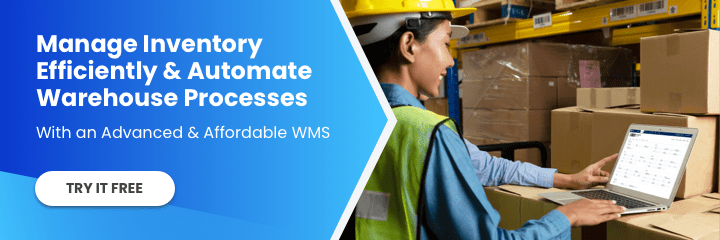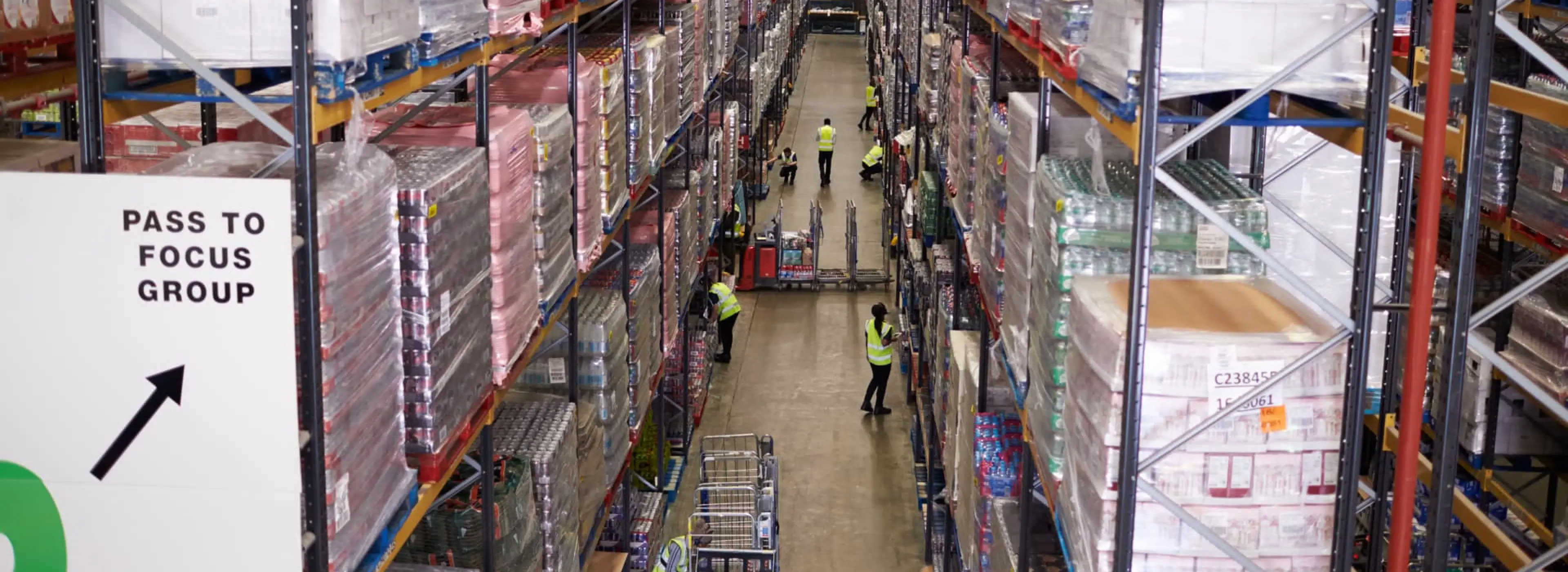Change is one of the few consistent things in life. Evolution occurs, bringing new opportunities as well as new challenges.
Whether you believe in Charles Darwin’s theory of evolution or not, the idea that “it is not the strongest of the species that survives, nor the most intelligent, but the most responsive to change (adaptability is key)” is true in business.
Click Here: Increase Your Warehouse Efficiency With This Advanced and Affordable WMS
As per Arie De Geus in the book “The Living Company,” a full one-third of the companies listed in the 1970 Fortune 500 had vanished by 1983, either being acquired, merged, or dissolved as they failed to adapt.
We are seeing a similar trend in the logistics industry, as mid-sized companies don’t recognize that the Warehouse Management System (WMS) that once met their needs is now stifling their growth. While the WMS may have served its purpose at one point, it can no longer provide the level of reliability, integration, automation, and reporting the company needs.
As your business grows, the Warehouse Management System you use also needs to evolve.
1. Select an Innovative and Fast-Adapting WMS Vendor
Selecting the appropriate software vendor is like deciding who to marry. The decision will have many implications that will shape many aspects of your business, from operations to your ability to compete in the marketplace.
The most important consideration when deciding on a WMS software vendor is to assess its ability to adapt to rapid technological changes. You want a system that is innovative and introduces new features in a relevant and secure manner. It should also follow a software development methodology that is short, adaptive, and has a continuous development cycle, such as Rapid Application Development (RAD) or Agile Software Development.
Finally, ask and investigate if the vendor has a software quality assurance process that includes functionality, integration, and stress testing. This will help reduce the number of software bugs that could disrupt your WMS and business operations.
2. A Scalable and Secure Database Solution
A database is a central repository for your business information, including warehouse receipts, bills of lading, air waybills, transactions, customer information, tracking information, etc. As a result, you must ensure that the WMS supports a database that efficiently and securely stores and retrieves data.
A WMS solution that does not do this will have a direct impact on your business productivity. A system that is inefficient at managing large amounts of data will keep your employees waiting while the system finishes processing a transaction or retrieving a record. A few seconds per transaction adds up to lost productivity.
To keep this from happening in your business, make sure the database system on which your WMS runs is scalable and secure. As your business grows and you add more transactions and records, you want a system that will remain stable and keep operations running smoothly. It is at this point that licensing costs are no longer an expense, but an investment in the sustainable growth of your company.
Examples of scalable databases include Microsoft SQL, Oracle, and IBM DB2, with these three compromising more than 85 percent of the market. Another good open-source solution to consider is MySQL.
3. Cross Departmental Functionalities
As your business grows, it is only natural that you may need to add or expand on business functions. Some of the most important ones include accounting and finance, customer relationship management, human resource management, operations, and sales. For the most part, there are only a handful of WMS solutions that are making serious inroads to integrate these other business functions.
Some WMS vendors make the case that these additional solutions should remain within software vendors leading that market, like SalesForce for customer relationship management (CRM) software. However, other experts believe that logistics focused solutions are better able to address the specific needs of the industry, thus gaining the benefits of specialization.
As your business grows and new business functions come alive, you should consider a WMS solution that combines some or all of these functionalities. You really don’t want to find yourself trying to integrate different software solutions to address your business needs. Selecting a WMS that includes these different business functions will be easier to implement and provide increased visibility across each critical function in your company while reducing errors.
4. External Partner Integration Capabilities
While you want a WMS solution that has additional functionalities built-in, you also want a system that allows for easy integration with other systems, including the systems of your external partners. Developing partnerships is one of the key strategies in growing your logistics business. Your company’s ability to integrate with other companies’ systems in the supply chain is vital to the health and longevity of the partnership.
Integrating your WMS with suppliers, manufacturers, retailers, and distributors increases efficiency and transparency and provides a unique competitive advantage. To ensure the integration will meet the needs of you and your partner, look for a WMS solution that provides interfaces such as API (Application Programming Interface) and/or EDI (Electronic Data Interchange). If you are considering a system that does not have an API or EDI, at least make sure that the system is using a standard database that allows for other software to integrate with it.
5. Fast and Reliable Technical Support
Last but not least, make sure that the WMS solution you select offers technical support that meets the needs of your company. No system is perfect and every system will eventually break. By being proactive, you can protect your operations by validating that the software vendor can provide the level of support your business requires.
Look for a Service Level Agreement (SLA) that legally guarantees response times for support requests, ongoing training to the support staff, for both the product and technology, adequate staffing levels of support personnel, trouble escalation thresholds, and hours of support with 24/7/365 being preferred.
You are in the business of moving goods in a timely manner and you need to make sure your systems are running flawlessly. If something breaks (and it will), issues need to be resolved as quickly as possible.
By selecting a WMS solution that offers secure and scalable integration with other business functions and technologies (like mobile printers, handheld computers, IoT, and cloud computing), you will better position your company to compete in the industry where less time and increased accuracy equals more business.
Instead of seeing the need to change your WMS as a disruption to business, logistics leaders must embrace change and properly plan to migrate to a WMS solution that allows your business to get to the next level. It wasn’t long ago that companies like Blackberry, Kodak, Radio Shack and Blockbuster were common household names. Yet now these companies are extinct, and the one thing they have in common is their failure to adapt. Embrace the opportunity and take your business and operations to the next level.
To learn about warehouse technology trends, follow us on LinkedIn, YouTube, X, or Facebook. If you have other inquiries or suggestions, please contact us here. We’ll be happy to hear from you.












